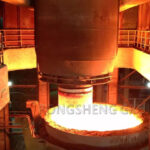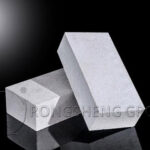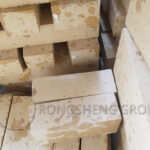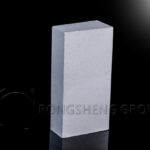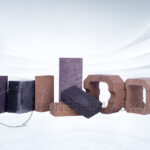The binder plays a crucial role in the preparation of Al2O3-SiC-C bricks (aluminum silicon carbide carbon bricks, High Alumina silicon carbide bricks). It significantly influences the mixing and molding properties of the raw materials, as well as the microstructure of the finished product. The main requirements for the binder in Al2O3-SiC-C bricks are as follows:
- (1) Good wettability with Al2O3 refractory aggregates and matrix.
- (2) Contains little or no harmful components.
- (3) The properties of the mixed mortar should not change significantly over time, and the chemical reaction with the aggregates should be minimal.
- (4) During the heating process of the finished product, the binder should have a high residual carbon content, and the carbonized polymer should have good high-temperature strength.
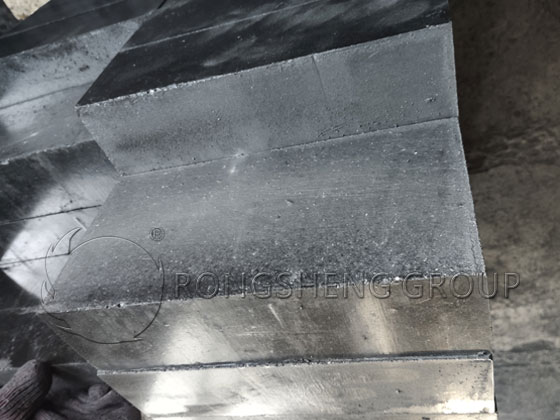
Types of Binders Commonly Used in Al2O3-SiC-C Bricks
Binders with good wettability and suitable viscosity with refractory aggregates and graphite can significantly increase the bulk density and strength of the product. Simultaneously, good wettability with graphite allows graphite particles to be uniformly dispersed in the product, forming a continuous network as much as possible. The continuous bonded carbon skeleton formed after carbonization significantly improves the strength and high-temperature slag resistance of the product. Therefore, selecting a suitable binder is crucial. Phenolic resin and aluminum dihydrogen phosphate are commonly used as binders in Al2O3-SiC-C bricks.
Phenolic Resin
Phenolic resin is obtained through a condensation reaction of phenolic compounds (cresol, phenol, xylenol, resorcinol) and aldehyde compounds (formaldehyde, furfural) under the action of acid and alkali catalysts. In the refractory materials industry, phenolic resin is widely used in the preparation of carbon-containing refractory materials due to its high carbonization rate, good adhesion, improved product strength, low content of harmful volatile substances, and high heat treatment temperature. It is mainly divided into thermosetting phenolic resin and thermoplastic phenolic resin according to its heating properties and structural morphology.
In the preparation of Al2O3-SiC-C bricks, thermosetting phenolic resin is generally used as the binder, with an addition amount of about 5%, resulting in refractory products with low porosity after molding. In a neutral or reducing atmosphere, phenolic resin decomposes upon heating, producing gases such as CO2, CO, CH4, H2, and H2O.
Phenolic resins continuously decompose and generate gases between 200℃ and 1000℃. These gases volatilize, forming open pores, increasing the apparent porosity of refractory materials, and affecting the strength, oxidation resistance, and slag resistance of carbon-containing refractory products. Therefore, to ensure the performance of refractory products, on the one hand, resins with low gas generation and high carbonization rate should be selected as binders for refractory products; on the other hand, an appropriate amount of resin should be added.
Aluminum dihydrogen phosphate
Aluminum phosphate is widely used in the preparation of refractory materials. One of its main advantages as a binder is the good properties of the binder at intermediate temperatures. Aluminum phosphate is mostly produced by the reaction of aluminum hydroxide and phosphoric acid. Due to different degrees of neutralization, three different products are produced during the reaction: aluminum dihydrogen phosphate (Al(H2PO4)3), aluminum hydrogen phosphate (Al2(HPO4)3), and aluminum orthophosphate (AlPO4). Aluminum dihydrogen phosphate is mainly used as the binder for refractory products. Its main mechanism is that after heating to a certain temperature, the reaction products polymerize, thereby improving the intermediate-temperature performance of the products. Aluminum dihydrogen phosphate is soluble in water at room temperature. When heated to a certain temperature, it decomposes into aluminum pyrophosphate and aluminum metaphosphate, and undergoes a polymerization reaction. The specific reaction is as follows:
The formation and polymerization of aluminum metaphosphate [Al(PO3)3]n simultaneously creates a strong adhesive effect, enabling the refractory products to acquire strength at intermediate temperatures. As the temperature increases, aluminum metaphosphate decomposes to form AlPO4 and P2O5. P2O5 can also react with Al2O3 in refractory materials to form AlPO4, improving the mid-temperature strength of refractory products.
As can be seen from the chemical reaction formula, before 500℃, aluminum dihydrogen phosphate mainly undergoes a dehydration process as the temperature increases. With the removal of free water from the product, shrinkage occurs. During the dehydration process before 500℃, the volume of the product is relatively stable, with only the porosity and bulk density of the binder increasing and decreasing, respectively. At this point, due to the gradual precipitation of AlPO4 and the formation and polymerization of aluminum pyrophosphate and aluminum metaphosphate, although the density of the binder decreases, the strength significantly increases.
When the temperature exceeds 500℃, the dehydration process of the binder decreases, and the weight loss of the product becomes extremely small. Before the high-temperature ceramic bonding occurs, the porosity and density of the product do not change significantly. The cold strength of the sample using aluminum dihydrogen phosphate as a binder begins to decrease around 500℃, and only begins to increase after ceramic bonding occurs inside the sample. Conversely, the hot strength of the sample continuously increases, reaching its maximum at 900℃. The increase in hot strength with increasing temperature may be due to the formation of AlPO4 and Al(PO3)3 during heating, as well as the expansion of the material, which fills the pores and makes the structure denser. From 900℃ to 1000℃, the hot strength of the material decreases significantly. This may be due to the volatilization of P2O5 from the decomposition of aluminum phosphate and aluminum pyrophosphate in the product, and may also be related to the crystal transformation of AlPO4.
AlPO4 undergoes a crystal transformation with increasing temperature: the low-temperature quartz type (low-temperature aluminum phosphate type) transforms into the high-temperature quartz type (high-temperature aluminum phosphate type) at 586℃. High-temperature aluminum phosphate can transform from the pyrophosphate form to the tridymite form at 815℃. Tridymite transforms into the cristobalite form at 1025℃.
During the transformation process, the volume of various AlPO4 crystal forms expands or contracts, damaging the structure of the product, causing cracks, and reducing the bonding strength. At temperatures above 1000℃, aluminum dihydrogen phosphate completely decomposes to form AlPO4 and P2O5 (AlPO4 only decomposes to form M2O3 and P2O5 at 1760℃). After P2O5 volatilizes, only AlPO4 remains. Calculations based on solid solution formulas show that AlPO4 can react violently with SiO2 at high temperatures to form mullite and P2O5.


